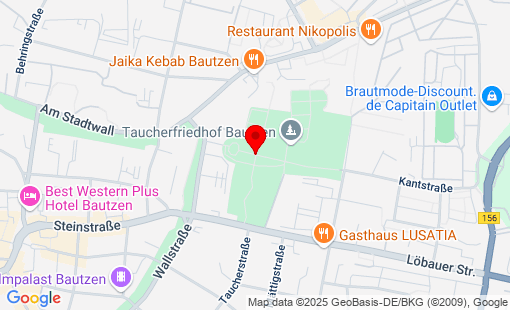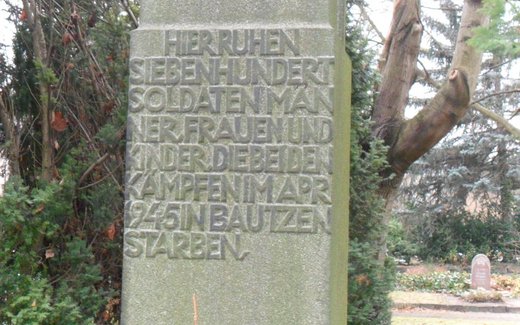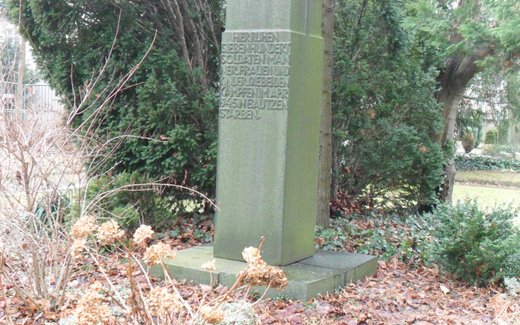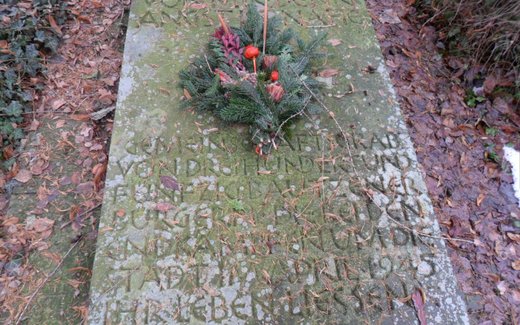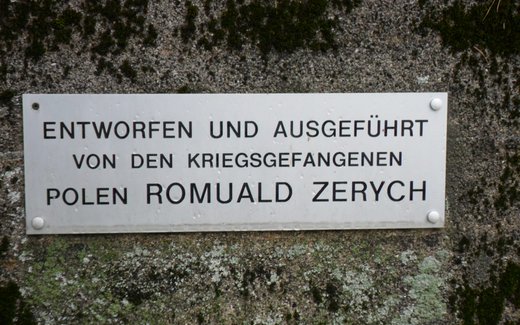the divers' cemetery was established in 1523. Initially located outside the town, it is now in the center. The divers' church was built on the edge in 1598/99, which has been repeatedly affected by wars over the centuries, has been used as a military hospital in the meantime and has undergone several major renovations.
Section 5 of the divers' cemetery contains over 1700 war graves from various nations. Many soldiers and civilians, especially Germans and Soviet citizens, were buried here during the Second World War. The Battle of Bautzen was one of the last major tank battles of the Second World War, which was followed by a fierce urban battle - both claimed a correspondingly large number of lives. Numerous Russian prisoners of war from the First World War also lie in this cemetery. There are mass graves, a crypt and individual graves as well as a large war memorial, which was designed and executed by a Polish prisoner of war. Unfortunately, the grave slabs, which were arranged in several rows in front of the memorial, were removed in the 1960s.
In the cemetery, a stone obelisk commemorates the fallen of the French and the allied Russian-Prussian armies of the Wars of Liberation of 1813.
There are other war cemeteries in the immediate vicinity of the Taucherfriedhof: the "Muskauer Straße Soviet Memorial Grove" with a large monument in the form of an obelisk, the "Am Ziegelwall" grave and memorial site for Polish and Soviet prisoners of war who were shot shortly before the end of the war, and the "Michaelisfriedhof" with around 400 more war graves.
From May 1945 to the beginning of 1950, the "Yellow Misery", the infamous Bautzen prison, was a Soviet special camp (Stalinist internment camp). Initially Nazi functionaries were imprisoned here, but under the guise of denazification, political opponents were increasingly imprisoned as well. It is estimated that several thousand of the approximately 27,000 prisoners perished. From 1992, the Volksbund participated in the search for and exhumation of the dead and supported the construction of the burial site on the Karnickelberg.
Opening hours and further information:Ev.-Luth. Kirchgemeinde St. Petri Bautzen/Budišin - Gottesacker zum Taucher
